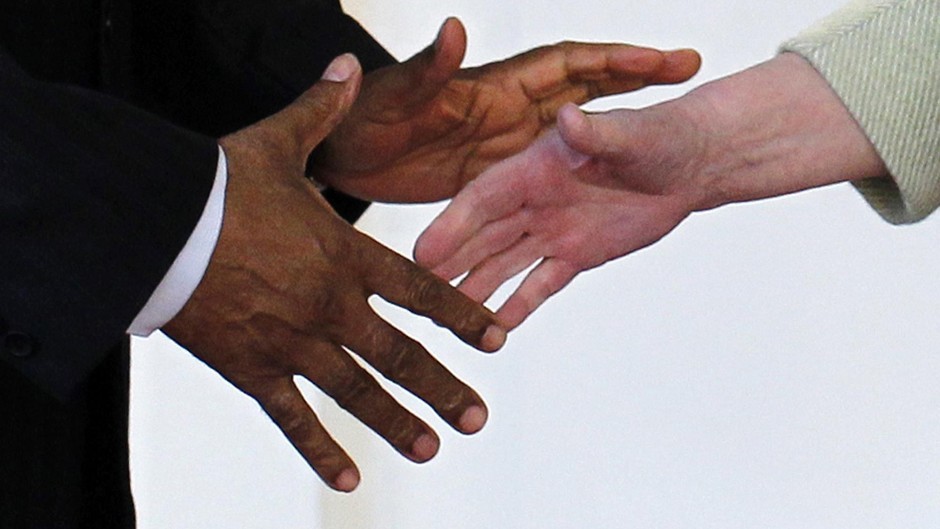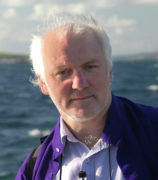It took us Highlanders and islanders thousands of years, and much cajoling and persuading, before we starting cuddling one another, only to be told in recent times that it isn’t permitted and that we need to socially distance by standing at least two metres away from one another.
Don’t they know that clan history has taught us to stay well away from everyone? Especially from Campbells.
I’m not sure I ever saw two people hugging one another during my childhood. Maybe it was done in secret and no doubt some canoodling went on here and there after the dances, otherwise there might not have been so many children.
But in public life it was an “Aye” if you met someone on the road or, if you really knew them and wanted to be extra friendly, it was “Aye, aye”. Which reminds me of the story of the Lewisman who loved his wife so much that he almost told her.
We northerners were made for social distancing. Look at peat-cutting, for example, where the cutter stands with the treisgeir on the turf above, with the peat thrower (which is why you need a good strong wife!) down in the bog flinging the peats up to dry.
They work a good regulation two metres away all day, with a cloud-mask of midges for protection, so maybe all work from now on in the Gaidhealtachd ought to be restricted to peat-cutting only?
Shaking hands, however, was de rigueur, to the extent that it even became an official part of Sunday mass post-Vatican 2. Ever since, you turn to your co-worshippers in the pew to shake hands with them and wish them the peace of Christ. Beats an emoji.
Which reminds me of the time poor Archie was away in Glasgow and, having gone out for a wee refreshment on the Saturday night, still managed to go to church in the morning, even with a thumping headache which restricted his awareness as well as his hearing.
At the point of greeting, the lady beside him turned towards him, stretched out her hand and said, as in the liturgy, “Peace be with you”. Archie was so surprised that he stuck out his hand immediately and responded: “And pleased to meet you too.”
The great priest Father Calum MacLennan of Eriskay also told me that he was delighted when the Church in Rome introduced this new practice, because the people in his parish were so kind that any time he put out his hand and shook theirs, he always found a £10 note in his own by the time he got it back.
Of course there are handshakes and handshakes. These horrible wet fishy ones where – at best – you are offered the tips of someone’s fingers, instead of a good firm greeting.
Equally, it can go the other way when you retrieve your hand and check how many bones big Archie has broken this time showing off his strength. A bit like the courtiers in olden days who visited the all-powerful sultan and checked that their heads were still on their shoulders as soon as they left the room.
These social conventions we adopt are fascinating and different the world over. My daughter was over in Bulgaria a couple of years ago and it took her a while to realise that nodding her head up and down in agreement meant the opposite over there – if you’re agreeing with someone you shake your head from side to side.
The important thing to remember here is that body language matters. It’s all in the eyes. Is he or she looking straight at me, what does that quick glance away mean? Why isn’t my wife sitting as close to me as usual? Why is that pupil sitting quietly in the corner? Doctors and teachers, and no doubt bank managers – if they still exist – take as much from our body language as from our words.
Which is why human contact and human interaction matter. Good as technology is, I still prefer going to the local Co-op, the butcher, the fish shop, the chemist and the post office to the online click-and-collect world we’ve been ushered into.
Not that I don’t see its usefulness – in the absence of a local bookshop, the postal workers beat a daily path to my door.
It’s more a matter of choice and democracy and humanity. The reality is that the world’s huge tech giants (aye, I mean Google and Amazon and Facebook and Apple and all these guys) are using the Covid-19 pandemic as a perfect foil for them to extend their empires into each and every corner of our individual lives right across the universe. We are mere consumer data at the end of their long commercial fingertips.
I’m no Luddite, I write this column every week on a computer and will send it by e-mail, and have a mobile phone – though not a smart one, whatever that is – but am old and wise enough to know that all these multinational tech companies will sacrifice everything and everyone in their path for the sake of expanding their own power and profit.
My advice is only trust someone you can firmly shake hands with. Especially in the peat bog.
Angus Peter Campbell is an award-winning writer and actor from Uist

